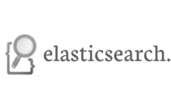Customer.
Our customer is in the business of delivering products and services in a variety of form factors for physical access as well as digital access such as transit payment, cashless vending, biometrics, asset tracking, mobile authentication. Almost more than two billion things need to be identified, verified and tracked using this set of technology to enable anything from access control to border protection.
Challenge.
To aid this process, the customer has setup thousands of manufacturing units all over the world to supply this huge demand to build hardware units. However, tracking these manufacturing units and inventories globally in real time was a huge challenge resulting in
- Varied level of delivery from site to site, workstation to workstation, country to country resulting in inconsistent varied performance levels of hardware manufactured.
- Inability to maintain high degree of product quality and leverage economies of scale across sites
- Unable to meet or comply quality standards, and compliance measures enforced from top to bottom
That’s when Intellectyx was provided an opportunity to collaborate and provide a solution.
We have all these sophisticated tools and technologies, but still we cannot compare workstation level performance even within the same manufacturing unit…quite frustrating
Solution.
As part of the effort, Intellectyx spent time to analyse each site and their work environment , plus information collected and the current set of tools and technologies used. Upon talking with various stakeholders and analysing all data points collected, it came well evident that each manufacturing unit even though had the same set of technologies and processes used, the amount of information collected wasn’t the same and had various data quality issues.
Moreover data wasn’t well integrated across all sites to provide a global snapshot and limiting any site, geographic level comparison for benchmarking. Without trying to replace the existing technology implemented via Oracle ERP, we leveraged its workflows by identifying gaps in terms of data collected and integrating via an Internet of Things (IOT) implementation to create a seamless automatic data collection without any manual labour.
This involved not only collection of aggregate level of information such as number of units produced per day, resource availability, cost efficiency and time frame for order delivery, operator performance and site performance but also step level operation. performance by the operator in a workstation while assembling a device. Once automated data collection was enforced with strict data governance policies and procedure, a visualization layer was added to perform site to site comparison, operator level performance, and KPI and benchmarking.
Result.
This integrated IOT solution with data lake hub and visualization architected and delivered enabled the customer in less than three months to go from lack of visibility to a near real time global dashboard. Now the customer was able to
- Identify areas of training and procedural guidance needs to achieve higher standards and higher volume of production
- Identify fault devices from suppliers with varied levels of standards and replace them with new suppliers to perform at higher standards
- Achieve higher level of quality and standards cross all device manu factured globally





